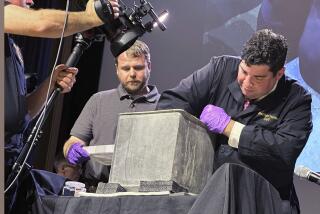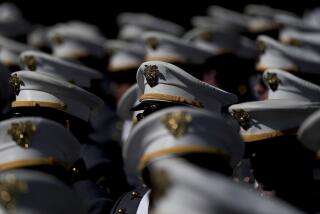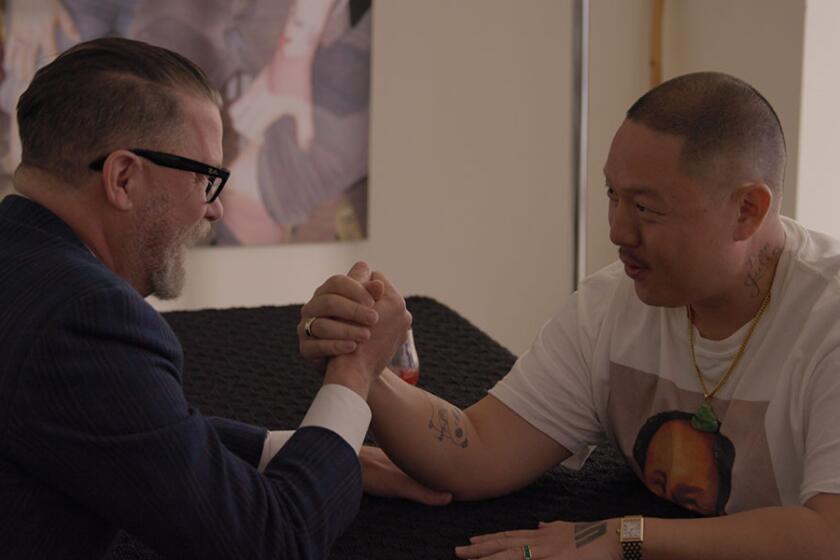‘West Point’ Maps History of Elite Military Training
Early in the documentary “West Point” about the history of the U.S. Military Academy, a former faculty member diagnoses the dilemma of having such an elite institution in a democratic society with populist tendencies.
Robert H. Moore, a faculty member from 1968 to 1972 and author of a book about the academy, says West Point “serves as a Rorschach test” for American values.
“In a time when the country is in agreement about its use of military power, West Point seems like a marvel of an institution where their whole professional ethos is devoted to doing the country service,” says Moore.
“[But] at times when there’s confusion and disarray about the country’s military objectives, West Point seems like a den of iniquity where military people conspire to carry out their trade irrespective of the desires of the civilian population.”
That push-pull was present from the beginning. The academy was authorized in 1802 by President Jefferson, who had once been one of the most ardent foes of the idea, believing it smacked of the European system of a professional military hostile to civilian authority.
Narrated by Andre Braugher, “West Point,” tonight at 9 on PBS stations KCET-TV and KVCR-TV, tells of the triumphs, failures and controversies of the former Revolutionary War garrison 50 miles north of New York on the Hudson River--all backed with sumptuous photography and historic stills.
The effort excels in describing the larger-than-life figures who shaped West Point and were shaped by it: Lee, Grant, Patton, Eisenhower, MacArthur, Bradley.
The tactics taught at West Point helped the U.S. whip the much-larger Mexican army and capture Mexico City in 1847, winning a piece of real estate now known as California. The Civil War was a battle between West Pointers who remained loyal to the Union and those who bolted for home.
The career of Douglas MacArthur, the archetypal West Pointer, is deftly traced from his days as a brutally harassed cadet to his final speech to the cadets as an enfeebled and somewhat fallen figure:
“In the evening of my memory, always I come back to West Point. My last conscious thoughts will be of the corps and the corps and the corps.”
Amid the glory, “West Point” does not disregard the scandals, racism, sexism, cheating, hazing and drug use. Retired Gen. Andrew Goodpaster, superintendent from 1977 to 1981, is credited with rescuing West Point from a corrosive counterculture that condoned drugs, cynicism and cheating.
If “West Point” is strong on the institution’s past, it is less so on its present and future. Some interviews with cadets might have helped. Who are these young people who are drawn to the profession of arms? A peek into a classroom would have been nice. What are cadets taught about Vietnam?
A discussion with non-West Pointer Colin Powell about the difference between West Point officers and ROTC-trained officers would have been beneficial. For all its tradition, West Point provides only a quarter of Army officers.
Some West Pointers are allowed to go over the top in praise of their beloved institution, suggesting the insularity that worried Jefferson.
H. Norman Schwarzkopf, class of ‘56, says West Point, although expensive to run, deserves to be supported as the “one place that is the keeper of the holy flame of military professionalism....”
The one place?
The folks who run Marine training at San Diego and Parris Island--and provided the majority of combat troops sent to Afghanistan--might take exception to that view.
*
“West Point” airs tonight at 9 on KCET and KVCR.
More to Read
Only good movies
Get the Indie Focus newsletter, Mark Olsen's weekly guide to the world of cinema.
You may occasionally receive promotional content from the Los Angeles Times.










